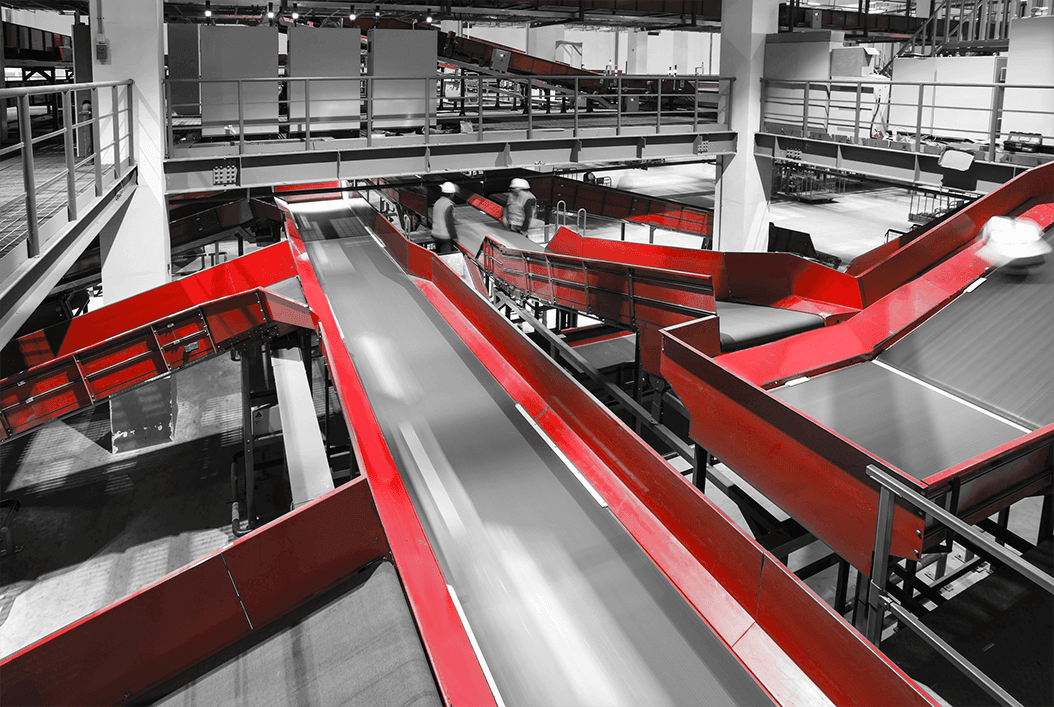Robotic palletisers offer considerable versatility and can be found in applications across a wide range of industries, each with its own unique requirements and challenges. From handling delicate food items to efficiently managing high volumes in e-commerce, these robots are tailored to meet diverse operational needs. Here’s a closer look at how robotic palletisers are transforming key industry sectors:
Manufacturing
Efficiency, consistency, and adaptability are critical in manufacturing. Here, robotic palletisers are integral to operations, particularly in industries such as automotive, electronics, and chemicals, where applications include:
- Stacking finished goods such as machine components, electronics, or heavy industrial parts
- Managing diverse product lines with frequent changes in specifications and packaging
- Handling hazardous materials (e.g. chemicals or paint) that require precise and safe handling to comply with safety regulations.
The e-commerce boom has significantly increased the volume and complexity of warehousing operations. Robotic palletisers meet these demands by handling small, varied packages with speed and precision, such as:
- Sorting and palletising high-mix, low-volume packages for last-mile delivery hubs
- Building mixed pallets with items destined for specific delivery routes
- Working in conjunction with sortation and/or conveyor systems to process large volumes of daily shipments efficiently, enhancing operational performance in the logistics industry.
Food and Beverage
The food and beverage industry requires meticulous handling due to product sensitivity, hygiene and traceability standards, and diverse packaging formats. Robotic palletisers are well-suited to meet these stringent requirements across:
- Stacking crates of bottled beverages or cartons of packaged foods
- Handling fragile items like glass bottles or perishable products
- Ensuring compliance with food safety standards by using robots in controlled or cleanroom environments.
With increasing emphasis on faster delivery to retail stores and grocery chains, robotic palletisers play a vital role in enabling the overall supply chain to be more efficient. Applications vary considerably and include:
- Palletising cases of canned goods, frozen foods, or fresh produce for distribution
- Creating mixed SKU pallets tailored to specific store orders, reducing the need for manual intervention at the store level
- Handling seasonal surges efficiently, such as during peak or promotional periods.
Regardless of industry sector, robot palletisers offer enhanced efficiency, accuracy, and productivity, making them a reliable and robust solution to a host of application challenges.
Considerations for Integrating Robot Palletisers
Even with their many benefits, implementing robotic palletisers requires careful planning. Businesses must consider factors such as the initial cost of investment; the ROI may be significant, however the upfront costs can be prohibitive for smaller operations. Robotic palletiser systems require dedicated space which could be a challenge for compact warehouses or production facilities. Additionally, training needs must be considered as employees will need to be trained to operate, maintain and troubleshoot automated systems to ensure any downtime and impact on productivity is minimised. However, with intelligent robotic technology evolving on a daily basis, palletisers are becoming increasingly cost-effective, agile, and compact, thereby offering a solution that is worth careful consideration for both small and large operations.








